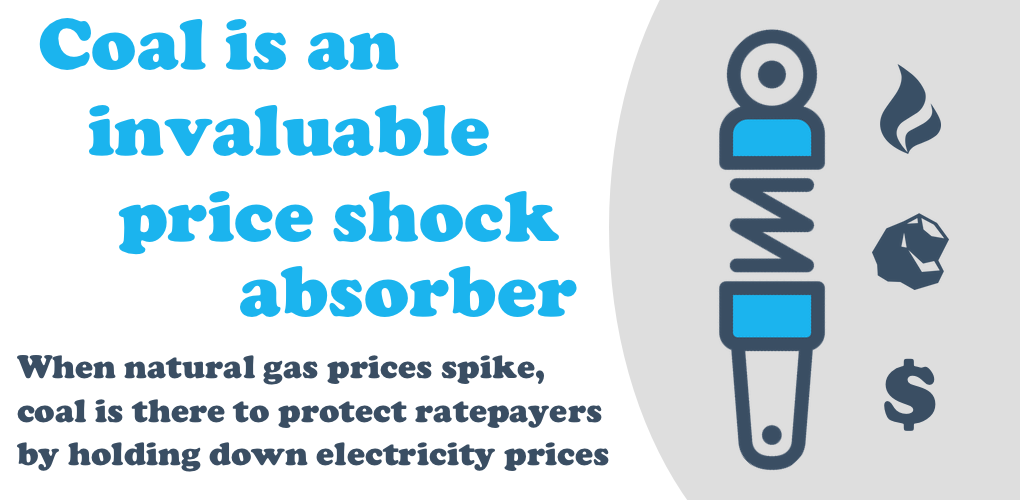
When Dispatchable Fuel Diversity Goes, Affordability Does Too
Coal power proved invaluable across the Midwest this February in keeping the lights on and homes warm during the deep freeze. But coal is not just a reliability backstop. As we’re now seeing, it’s also a critical piece of a balanced generation portfolio that holds down wholesale electricity prices.
On the Southwest Power Pool (SPP) and the Midcontinent Independent System Operator (MISO) grids, which cover most of the Midwest, coal generation is up this March, taking market share from higher-priced natural gas. Natural gas prices in the center of the country have risen $1/MMBtu from this time last year, up more than 60%, giving coal a considerable cost advantage. Coal’s share of the market in SPP is up to 27% from 24% last year, and in MISO coal generation is at 38% – up about 10% from March 2020.
The optionality provided by coal remains an invaluable price shock absorber, allowing fuel switching when gas prices jump – and jump they occasionally do. This February produced huge natural gas price spikes from Texas all the way north to Minnesota and the Dakotas.
“There’s no way we can pay that”
Consider the story of tiny Denison, Kansas, which has been pushed to the brink of insolvency. During winter storm Uri over President’s Day weekend, with gas supplies constrained and demand high, natural gas prices soared to hundreds of times their normal range. Utilities and municipalities, like Denison, were forced to choose between letting their consumers freeze or paying the exorbitant prices.
Reporting from Pew found that, “Denison has fewer than 200 residents, and in a typical February, the city pays about $4,000 to provide them with natural gas to heat their homes. Last month, the bill came to $242,498.”
“We don’t even know how to go under,” Vickie Wold, the city council president, told Pew. “How the city fails, what happens here—we’re just hoping and praying. We can’t write that check. There’s no way we can pay that, and we can’t pass it on to these people, some of whom are struggling to keep their utilities paid as it is.”
Denison’s story is hardly an outlier. From towns to cities and natural gas-powered electric utilities, the spike in natural gas prices is an economic disaster.
In western Wisconsin, the price of natural gas skyrocketed from about $2.60 to more than $200 on Feb. 17, an increase of nearly 10,000%.
“The market volatility was off the charts,” said Valerie Wood, a consultant with Energy Solutions Inc. in Wisconsin. “We’ve been doing it since 1996 and have never seen anything like it.”
“This has to be a wake-up call”
In Minnesota and North Dakota, families are seeing increased home heating bills that are hundreds of dollars more than they were expecting.
Despite the higher costs and constrained gas availability, the electricity grid in the Midwest held up when it didn’t in some southern states, notably Texas. North Dakota’s Public Service Commission is determined not to let what happened in Texas happen in North Dakota.
North Dakota Public Service Commissioner Brian Kroshus told the Grand Forks Herald, “This has to be a wake-up call.” He said the outcome of the grid crisis could have been “catastrophic” if it had happened five or 10 years down the line, when there is likely to be less coal power online.
And this is the million-dollar question. In a decade, will coal power still be there to backstop reliability and provide the critical fuel diversity and balance customers so desperately need?
Increased reliance on just-in-time fuel delivery through an overstretched natural gas pipeline system isn’t a responsible path forward, nor is increased reliance on intermittent wind and solar power without market reforms to ensure the coal capacity that underpins affordability and reliability will be there when needed. Americans need a no-regrets electricity grid and energy system. As February demonstrated, they’re increasingly getting just the opposite.
- On March 24, 2021
